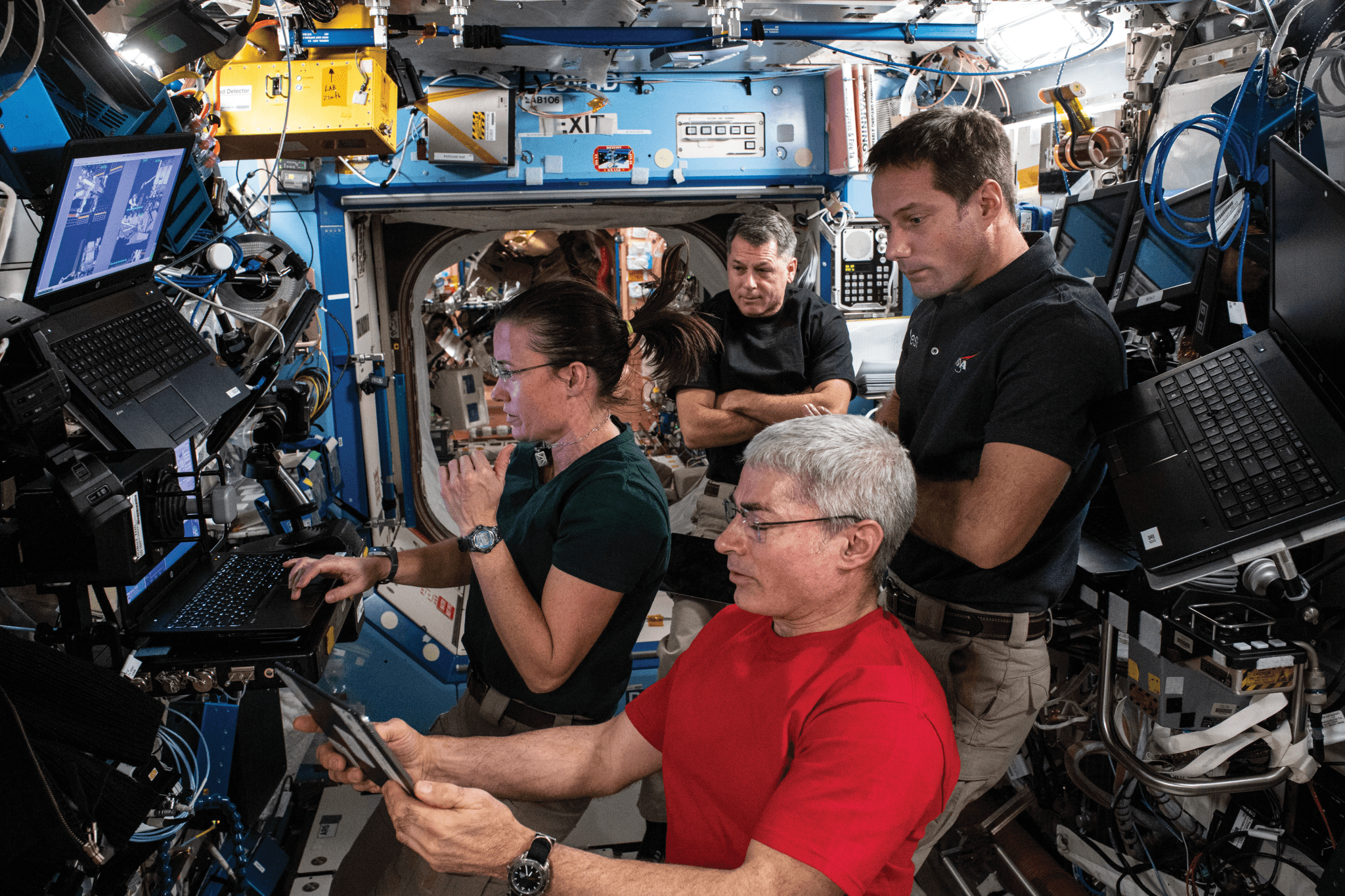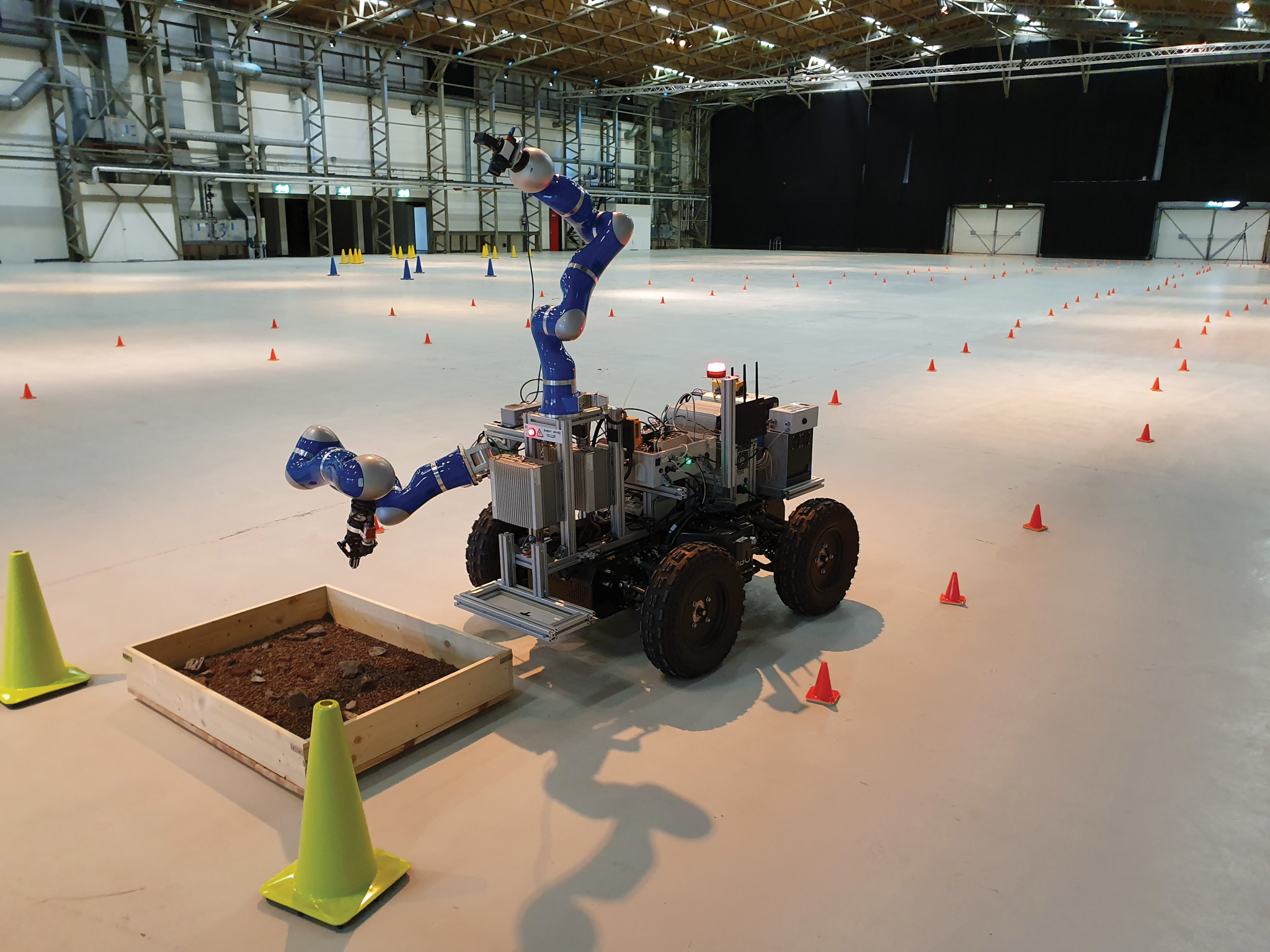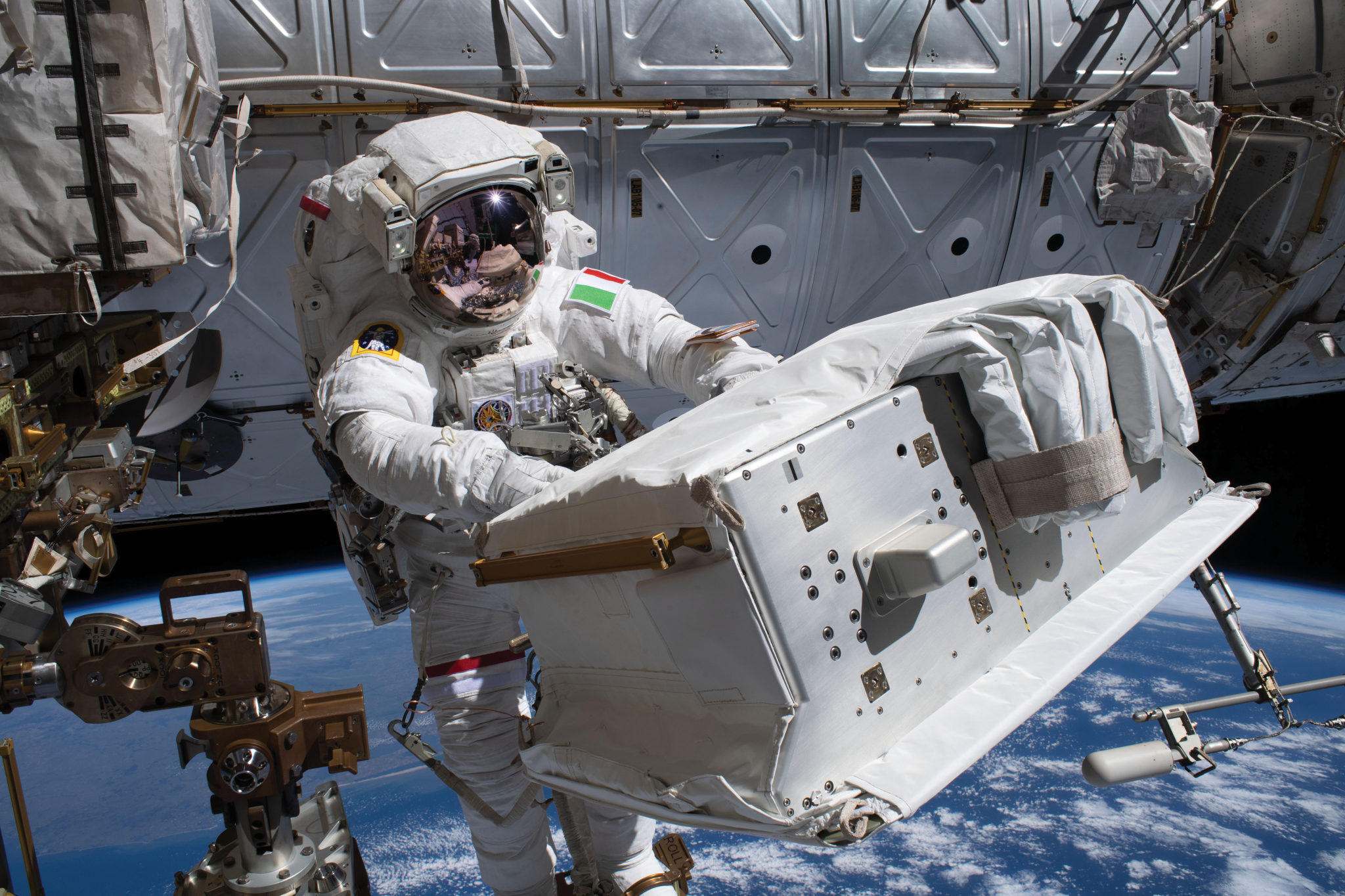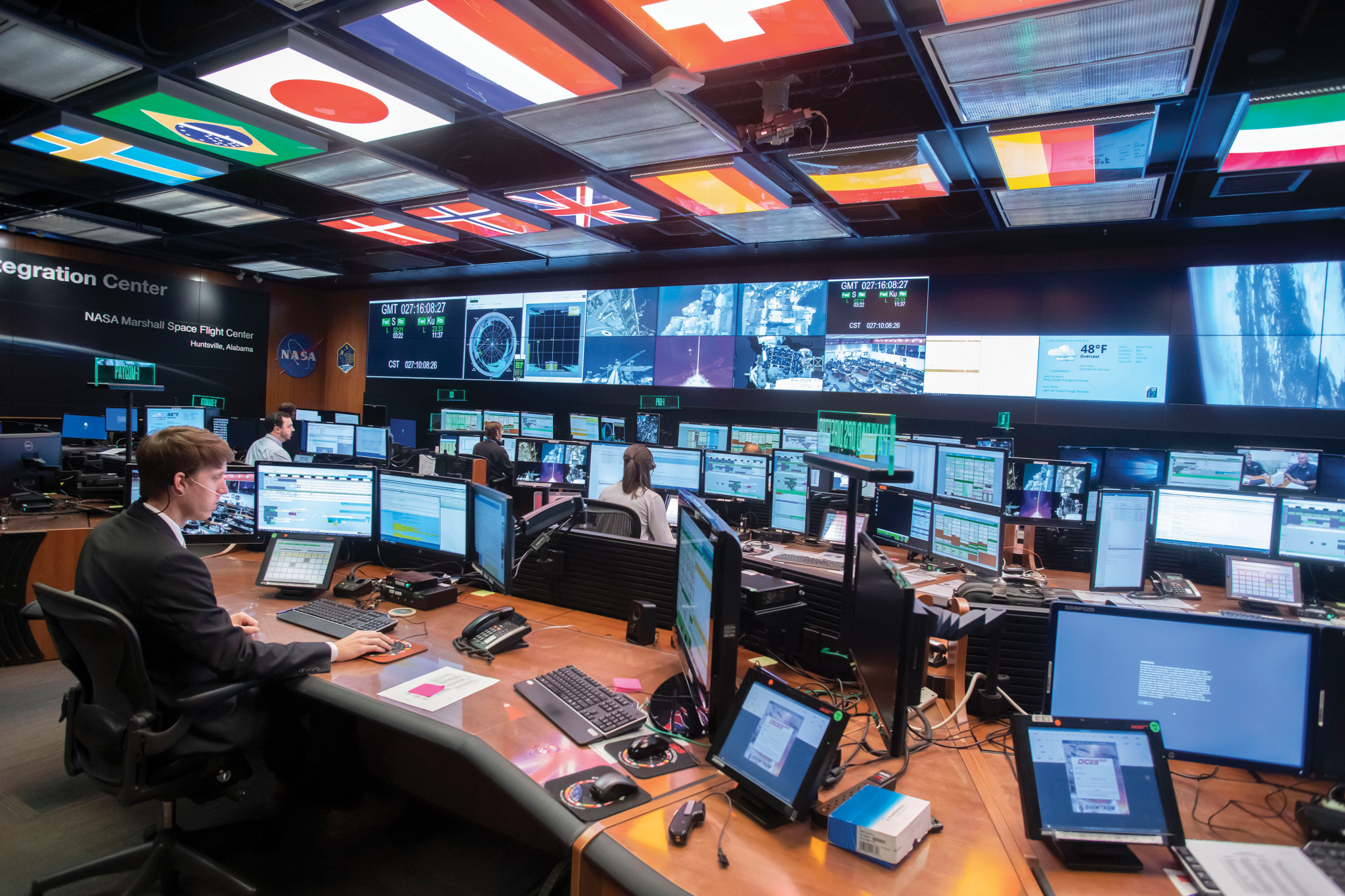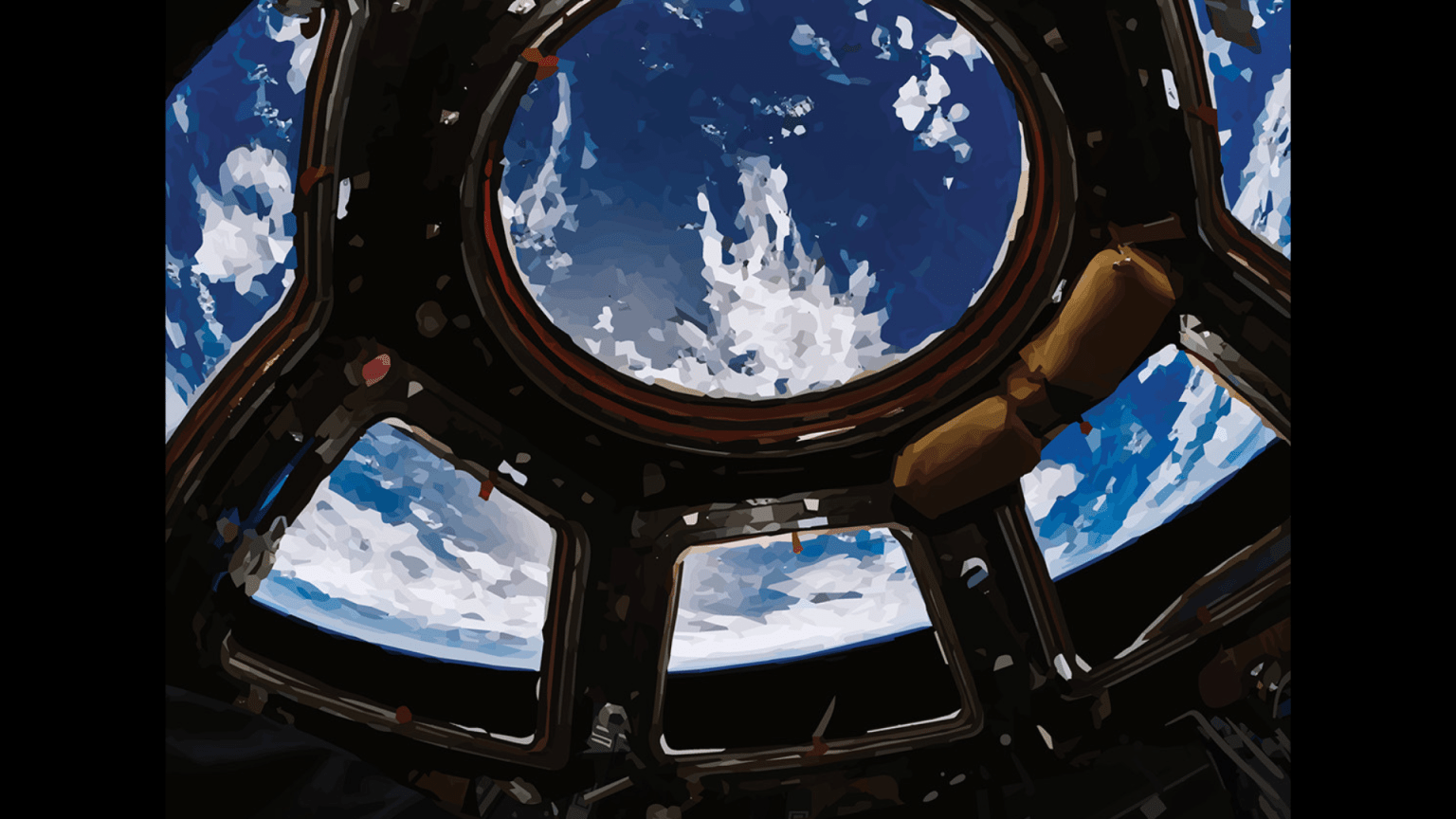In 2019, ESA (European Space Agency) astronaut Luca Parmitano was challenged to do something any kid (and most adults) would love to try: drive a remote-controlled rover from space. At the time, Parmitano was aboard the International Space Station and his task, dubbed ANALOG-1, was to see how well he could remotely command a robotic vehicle that was rolling around a course inside a building on Earth. This feat helps to prepare us for the day an astronaut could do the same type of task to explore the Moon, Mars, or other planets while orbiting above them.
“A number of space agencies have looked at such a scenario for the exploration of planetary bodies – particularly for Mars,” said William Carey, ESA scientist and principal investigator for the ANALOG-1 experiment. “The approach could greatly increase the scientific return on those missions, as well as offer a way to avoid potential contamination from humans landing on the surface before we can answer questions about existing or previous life on Mars.”
For more than 20 years, space station experiments like this one have honed our ability to live in and explore space. To help crews thrive on the station, we have created new technologies, improved communications, conducted hundreds of spacewalks, studied astronaut health and well-being, and expanded the ability of many countries to support and collaborate on mission operations.
During Parmitano’s expedition, he also worked alongside NASA astronaut Andrew Morgan to save a scientifically valuable but failing piece of equipment outside the station, the Alpha Magnetic Spectrometer-02 (AMS-02). The project involved a series of spacewalks that took four years to plan and required developing more than 20 new high-precision tools. The process of creating the tools and procedures for these spacewalks prepares teams for the types of spacewalks that may be required on Moon and Mars missions.
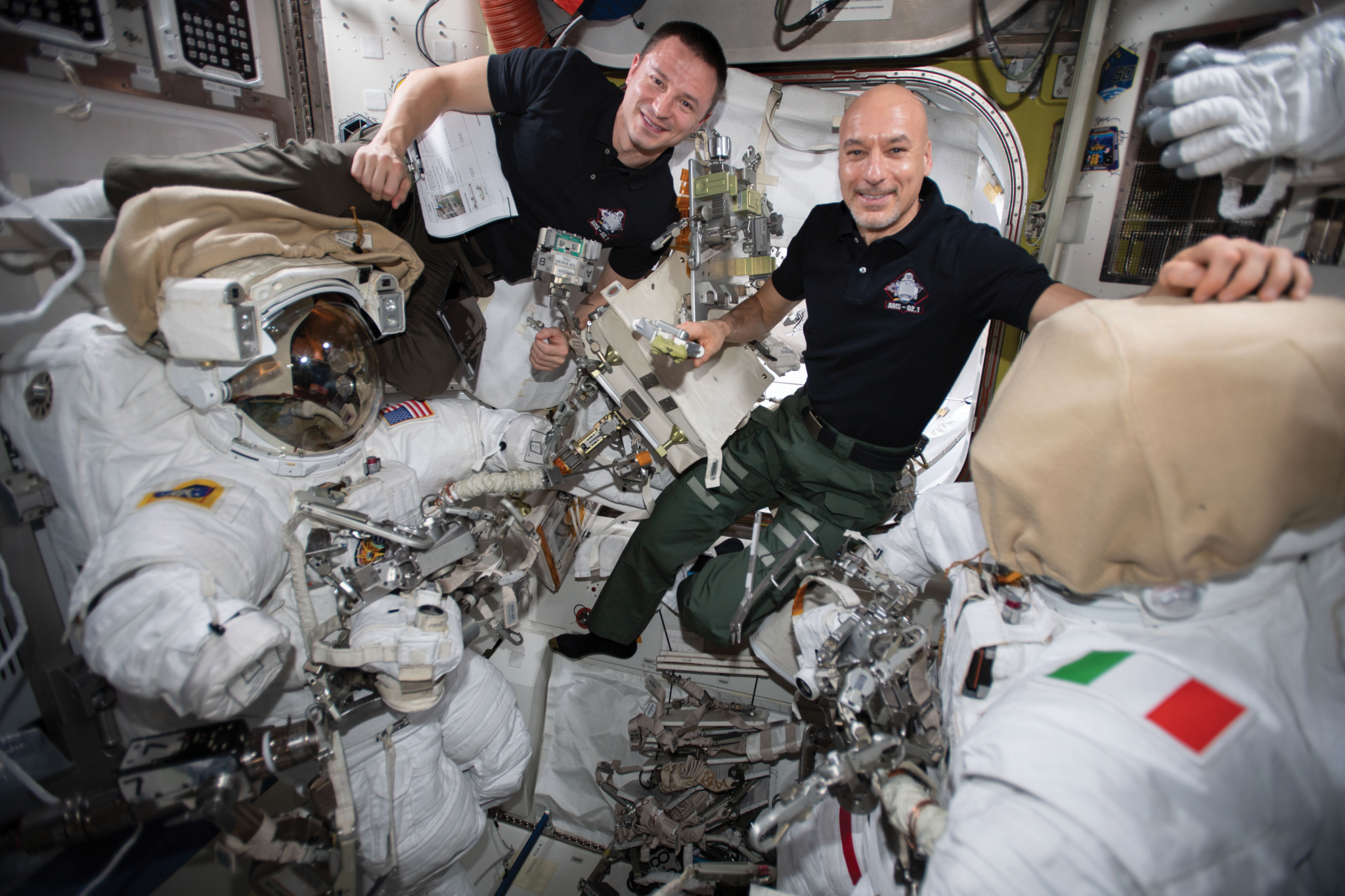
“These are the kind of skills that are going to feed into going to a planetary surface,” said AMS spacewalk repair project manager Tara Jochim. “Cutting stainless steel tubing and then connecting new tubes on a thermal system during a spacewalk with the user-friendly mechanisms we have developed, all the while keeping it safe for the crew member, are the types of activities that will help create processes for tomorrow’s spacewalkers.”
To date, NASA has completed more than 200 spacewalks outside the space station. A key to completing many of them has been the Canadian Space Agency’s (CSA’s) iconic Canadarm2, a 17.6-meter (57.7-foot) robotic arm used extensively during assembly of the orbiting laboratory and to capture and move equipment and astronauts around the outside of the orbiting lab. Parmitano rode the robot arm to the location of AMS-02 during the repair mission.
The CSA will provide Canadarm3 to NASA’s upcoming Lunar Gateway station, an outpost orbiting the Moon that will provide vital support for humans to return to the lunar surface long term, as well as a staging point for deep space exploration. Canadarm3 and Gateway are critical components of NASA’s Artemis program.
The Canadarm technology is also the basis for a revolutionary medical procedure robot called IGAR. IGAR is designed to be paired with MRI scanners for breast cancer surgeries to remove small lesions before they become large tumors.
If Canadarm2 is the brawn of many station activities, the astronauts and teams on the ground are the brains. Together, they expertly collaborate to make repairs, conduct experiments, and ensure station operations go smoothly.
A significant part of successful collaboration, of course, is good communication.
NASA’s Johnson Space Center in Houston works closely with international partners and Marshall Space Flight Center in Huntsville, Alabama, the site of the station’s Payload Operations Integration Center, to execute research. Engineers and technicians at Marshall develop and test life support systems and conduct new studies of the space environment to make living aboard the space station sustainable. Johnson and Marshall communicate and coordinate 24/7 with the station and international partners to ensure missions are safe and successful.
The importance of this type of teamwork was on display in 2017, when crews aboard the station conducted an experiment to sample bacteria inside the orbital outpost and then sequence its DNA on the station – all while Hurricane Harvey raged over Houston. Technicians at Marshall connected scientists who were hunkered down in their homes in Houston with astronaut Peggy Whitson as she ran the experiment in orbit.
“Science aboard the station wasn’t stopping because of Hurricane Harvey,” said NASA microbiologist Sarah Wallace. “I thought ‘Oh my gosh, I am watching the first sequence of an unknown from space.’”
Working together under adverse circumstances, the scientists coached Whitson through the first-of-its-kind process of sampling and identifying a microbe found in space without needing to send it back to Earth.
Crew member support has produced research that helps us understand how to protect and strengthen their mental health and teamwork on long-term missions. Researchers have learned about the effects of isolation, plants, food variety, and more on crew mental health. Crew experiences on station have even led to the development of the C-O-N-N-E-C-T concept to ensure crew members stay in good spirits and perform at their best by ensuring they take time to care for themselves and maintain a healthy mindset.
This work is done using a system of ground- and space-based communications networks and the combined knowledge of partner space agencies in dealing with challenges, such as those posed by interference from cosmic radiation and delays in the time it takes for messages to be sent and received.
The technology of the communications system aboard the station was recently upgraded to double the rate at which information is transmitted to Earth, paving the way for similar capability on Gateway. This new rate enables the space station to send back more science data faster than ever before.
Communications also have been enhanced on the station using other spacecraft. The Japan Aerospace Exploration Agency (JAXA) HTV Wireless LAN Demonstration (HTV WLAN Demo) conducted real-time, wireless video transfer between the space station and a visiting spacecraft. Autonomous docking technology is important for future missions that will be unable to rely on human assistance. The experiment involved taking videos from a vehicle near the space station and transmitting them to make astronauts aboard the station aware of the spacecraft’s current position. The wireless link was established at approximately 548 meters (1,800 feet).
New types of video also are put to the test in space and could potentially capture future deep space missions. NASA, Canadian company Felix & Paul Studios, and TIME Studios developed Space Explorers: The ISS Experience, an immersive cinematic experience filmed by astronauts aboard station. The team designed special cameras to capture science and life inside the station, as well as a spacewalk outside. Testing the virtual reality (VR) camera technology used in the production on station prepares filmmakers for potentially capturing and transmitting high-quality footage from future missions to the Moon and other deep-space destinations. CSA has provided Felix & Paul Studios an investment to further develop this camera technology for lunar use.
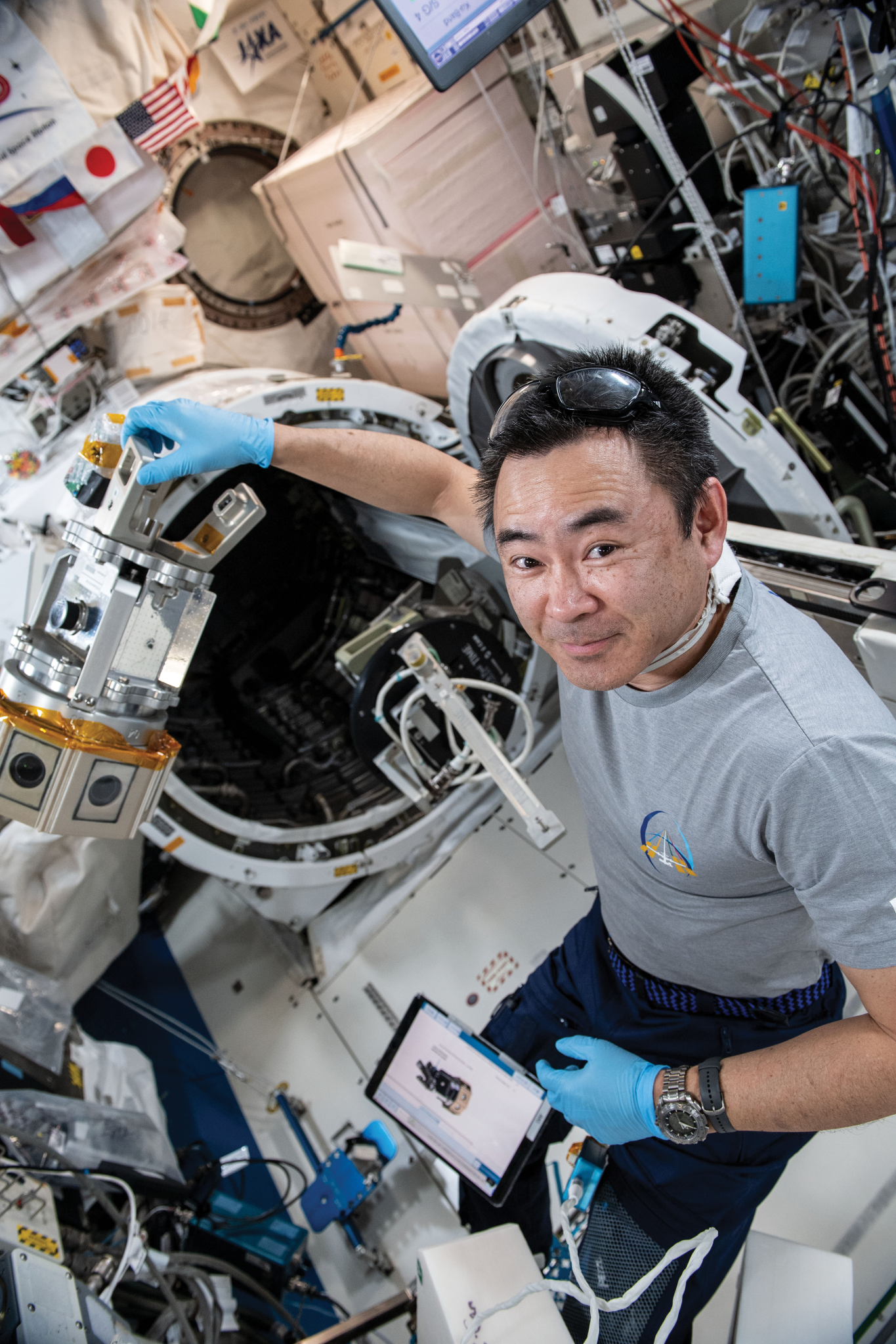
“I think it is inevitable that VR is going to be the default way to document space exploration moving forward. It is a perfect match between medium and story,” said Felix & Paul Studios co-founder and creative director Félix Lajeunesse. “Space exploration is something that you want to live. You want to be there. You want to experience it. Everything we’re doing on station right now is a demonstration for the spaceflight industry and the entertainment industry of how we can use this medium moving forward in the space world.”
By conducting missions aboard the space station, we are forging the ability to successfully send crews on flights that will take them farther into the solar system than they have ever been before.
“The International Space Station is one of the most ambitious international collaborations ever attempted,” said Jim Morhard, former NASA Deputy Administrator, during an event commemorating the space station’s 20th anniversary in orbit. “[It] is a convergence of science, technology, and human innovation that provides humanity with a one-of-a kind proving ground for Artemis as we go forward to the Moon and then on to Mars.”
Additional resources:
Data Rate Increase on the International Space Station Supports Future Exploration



























